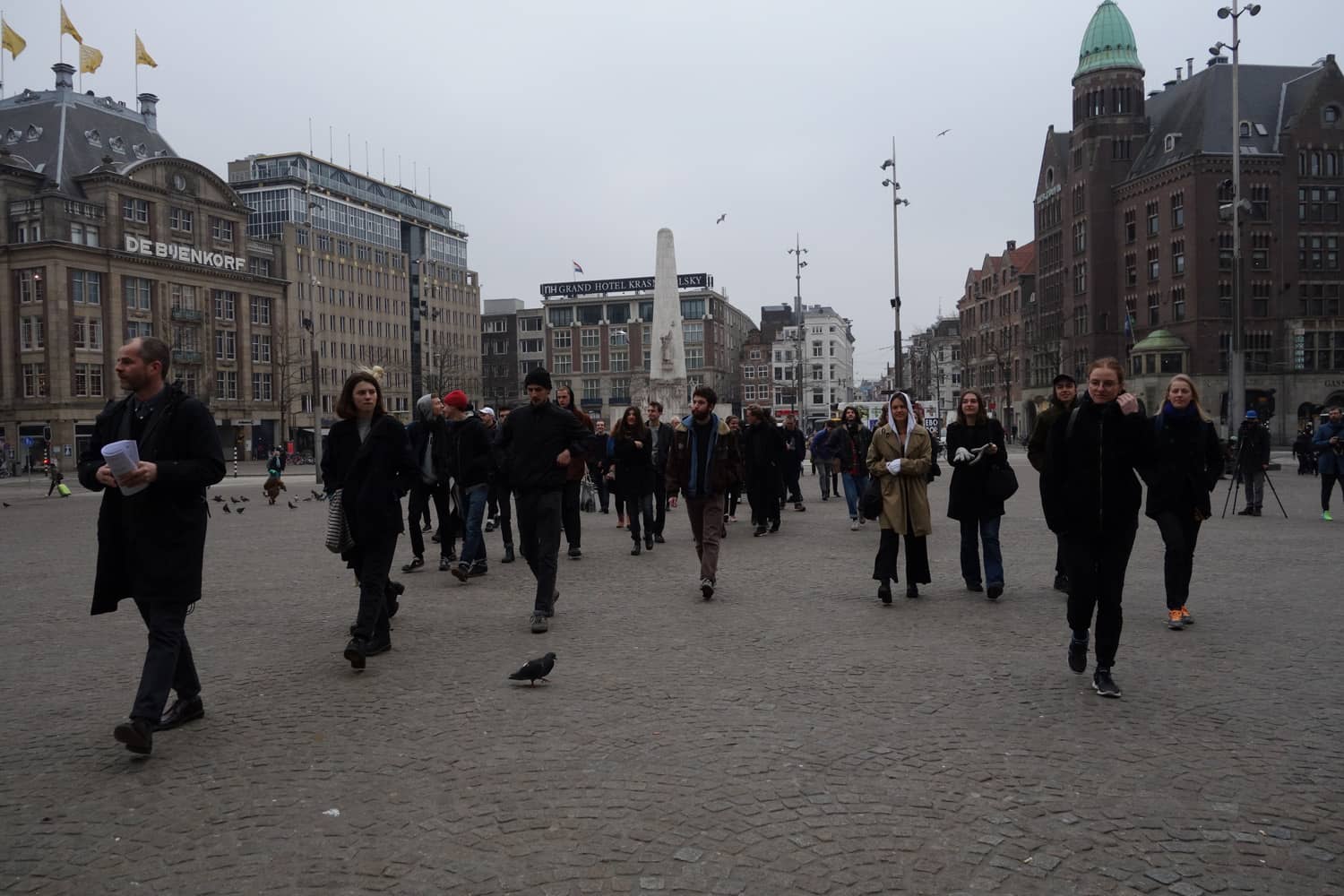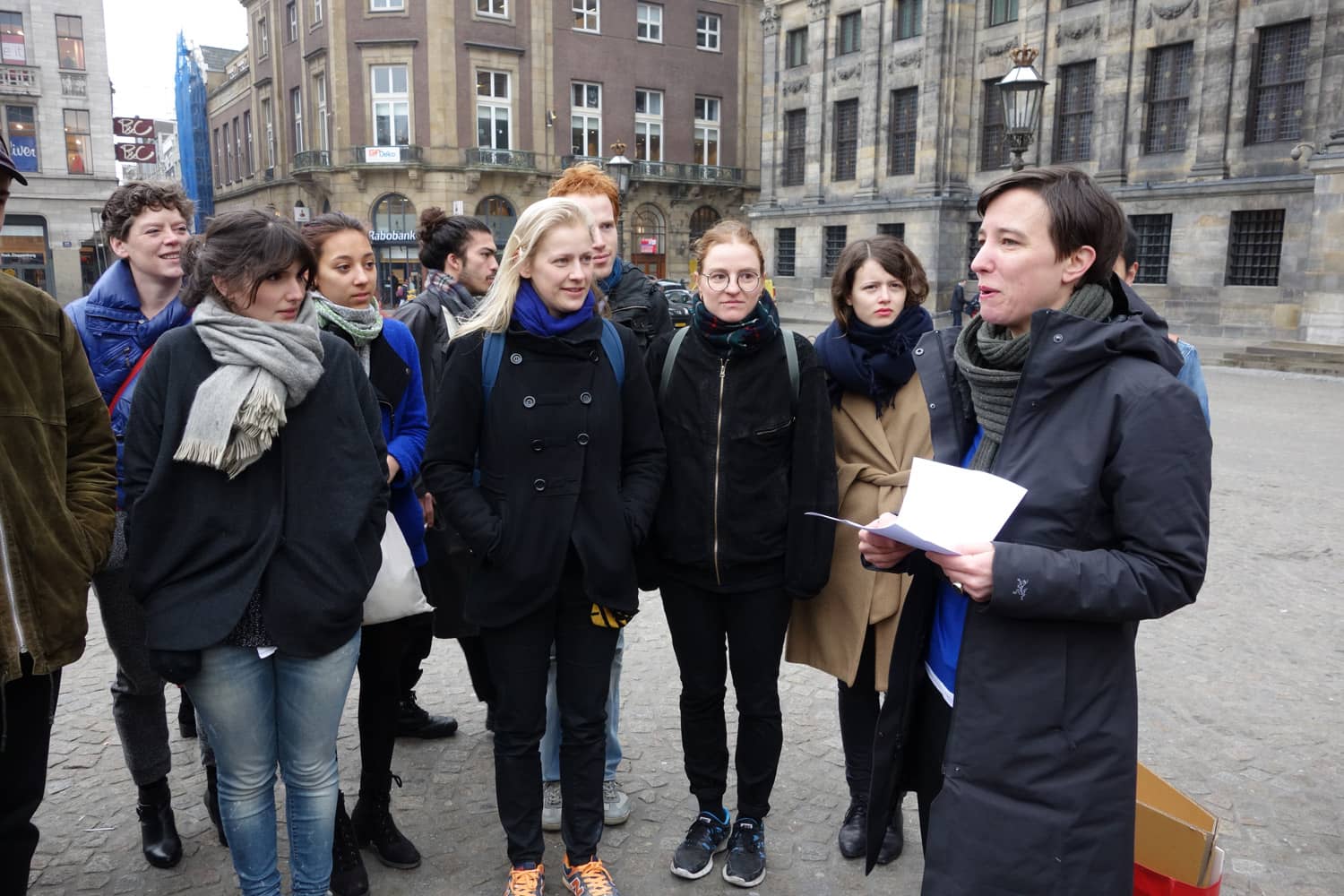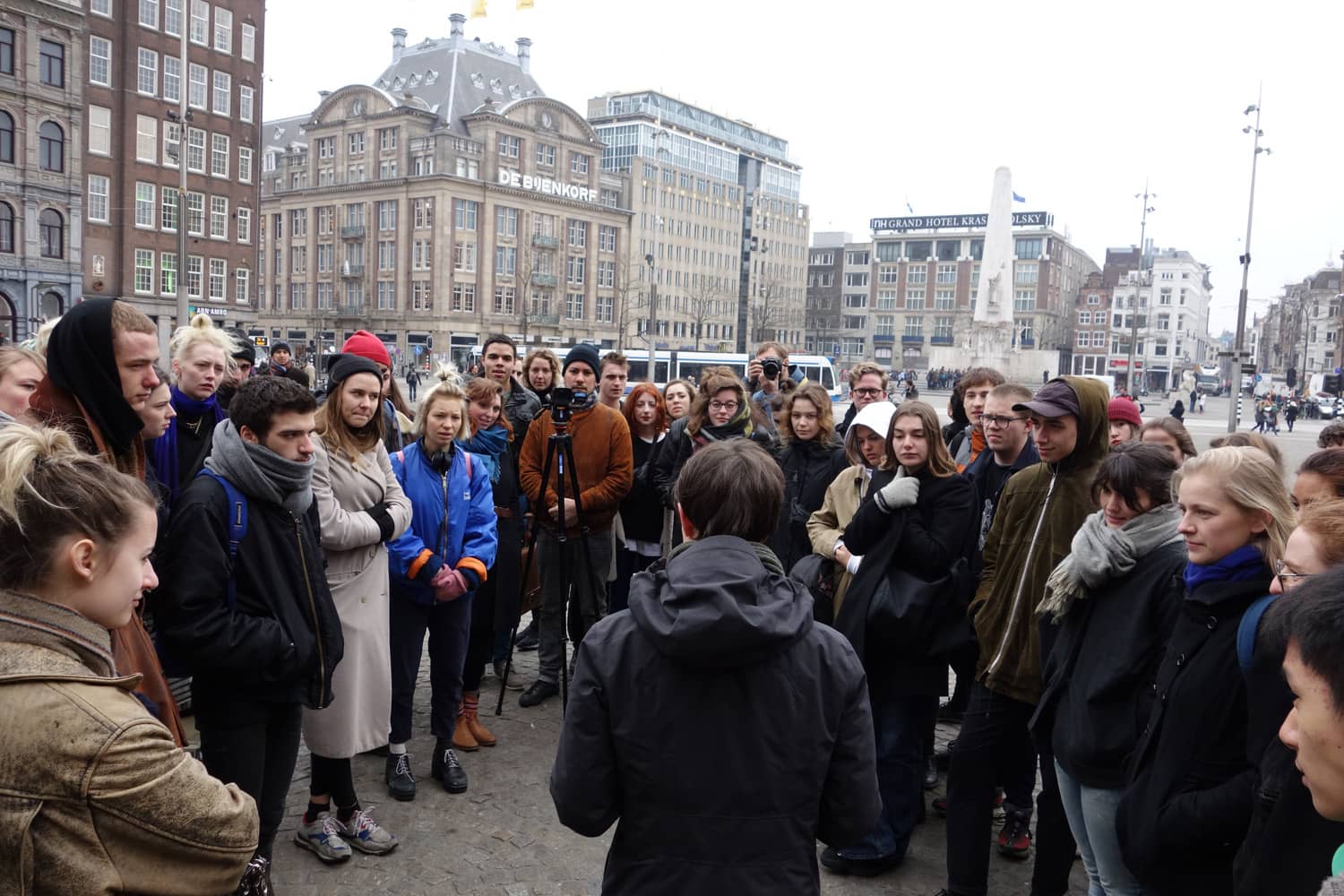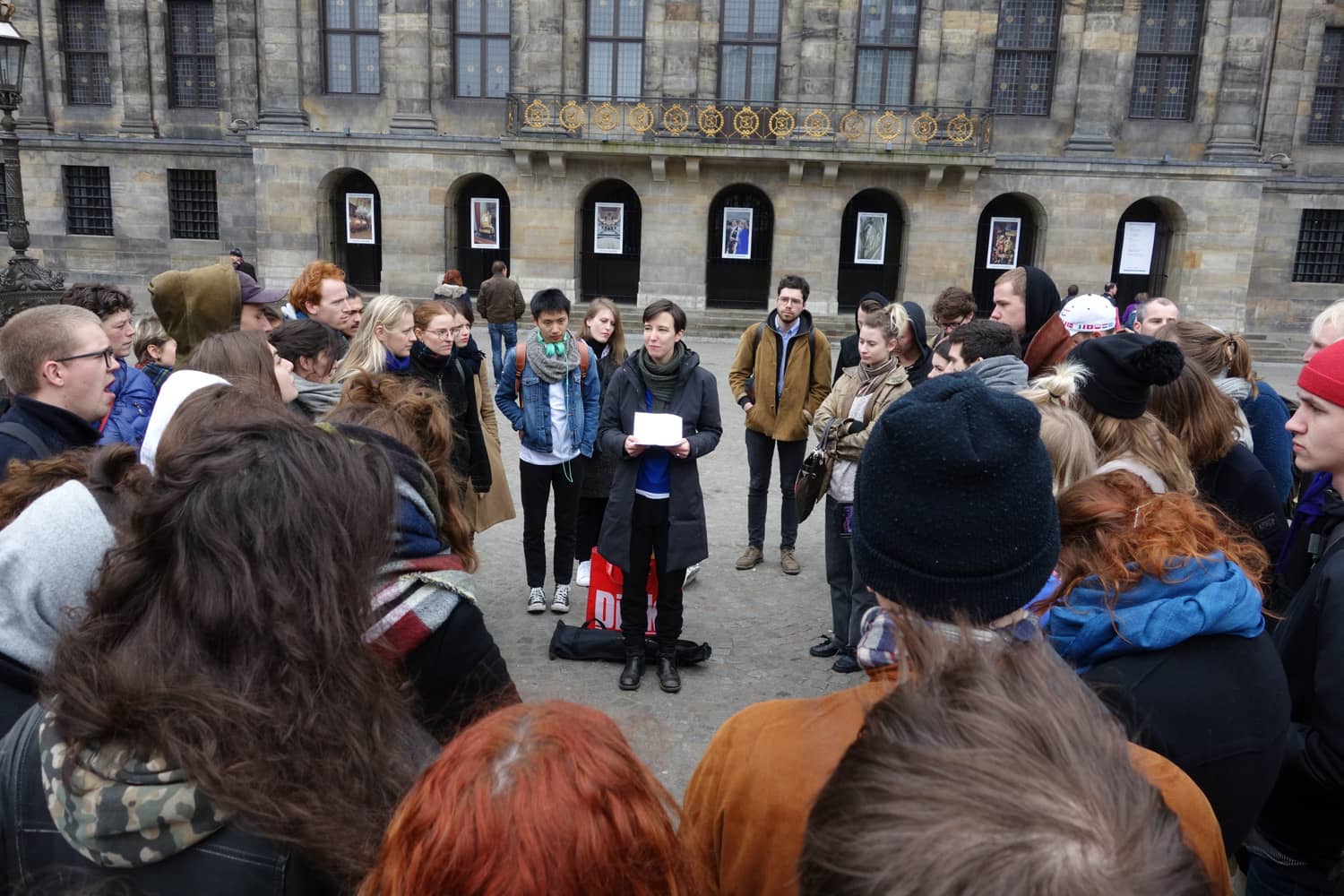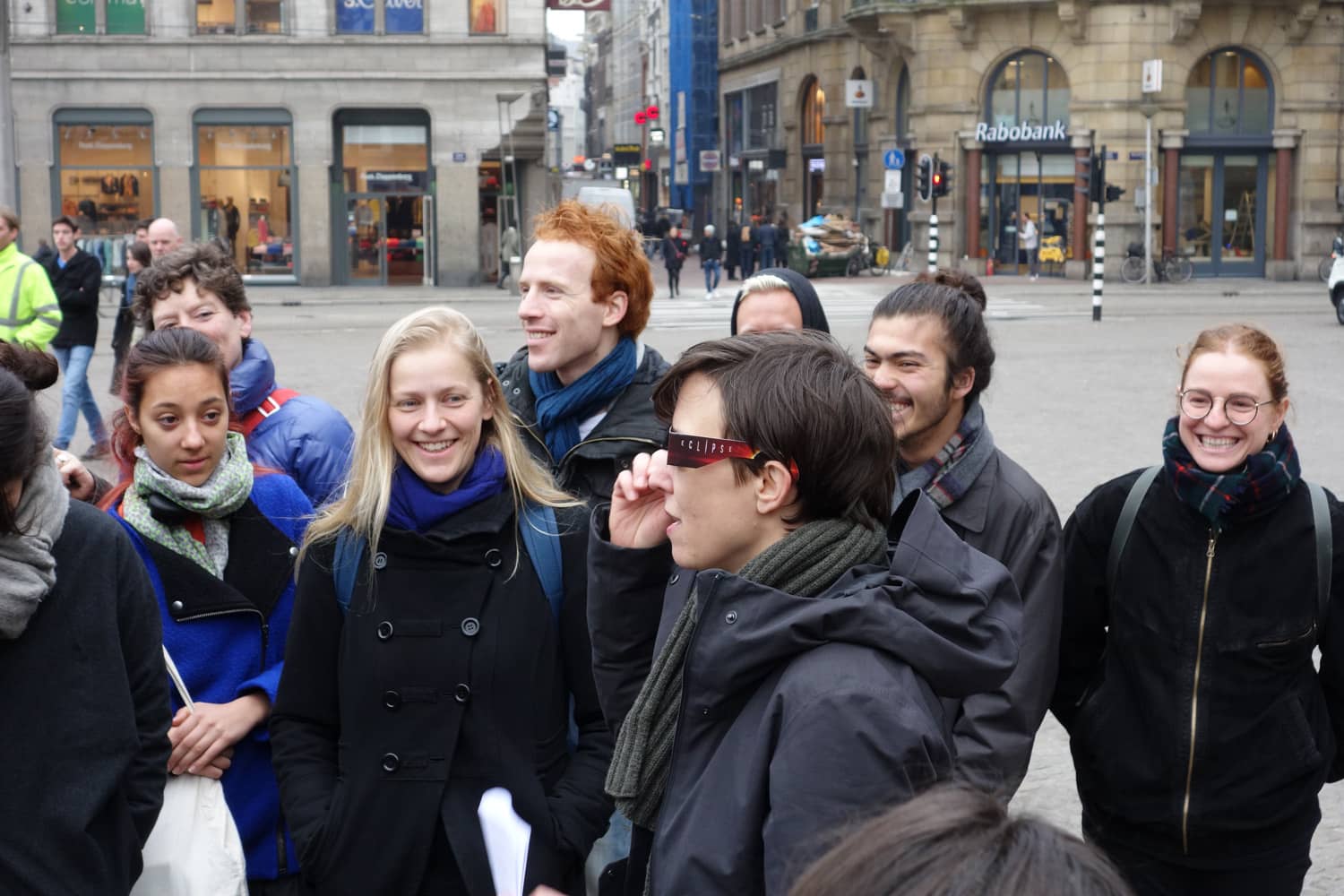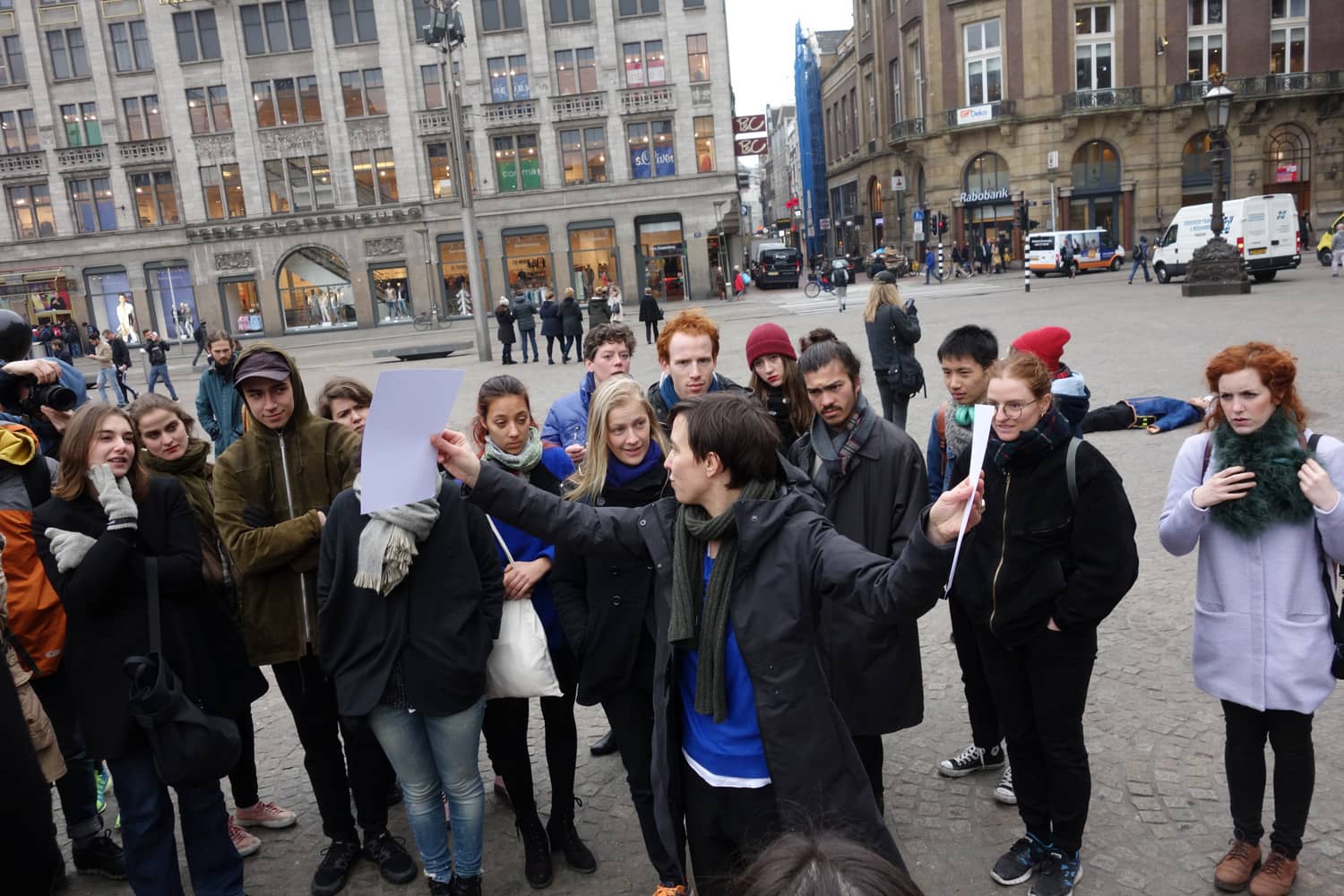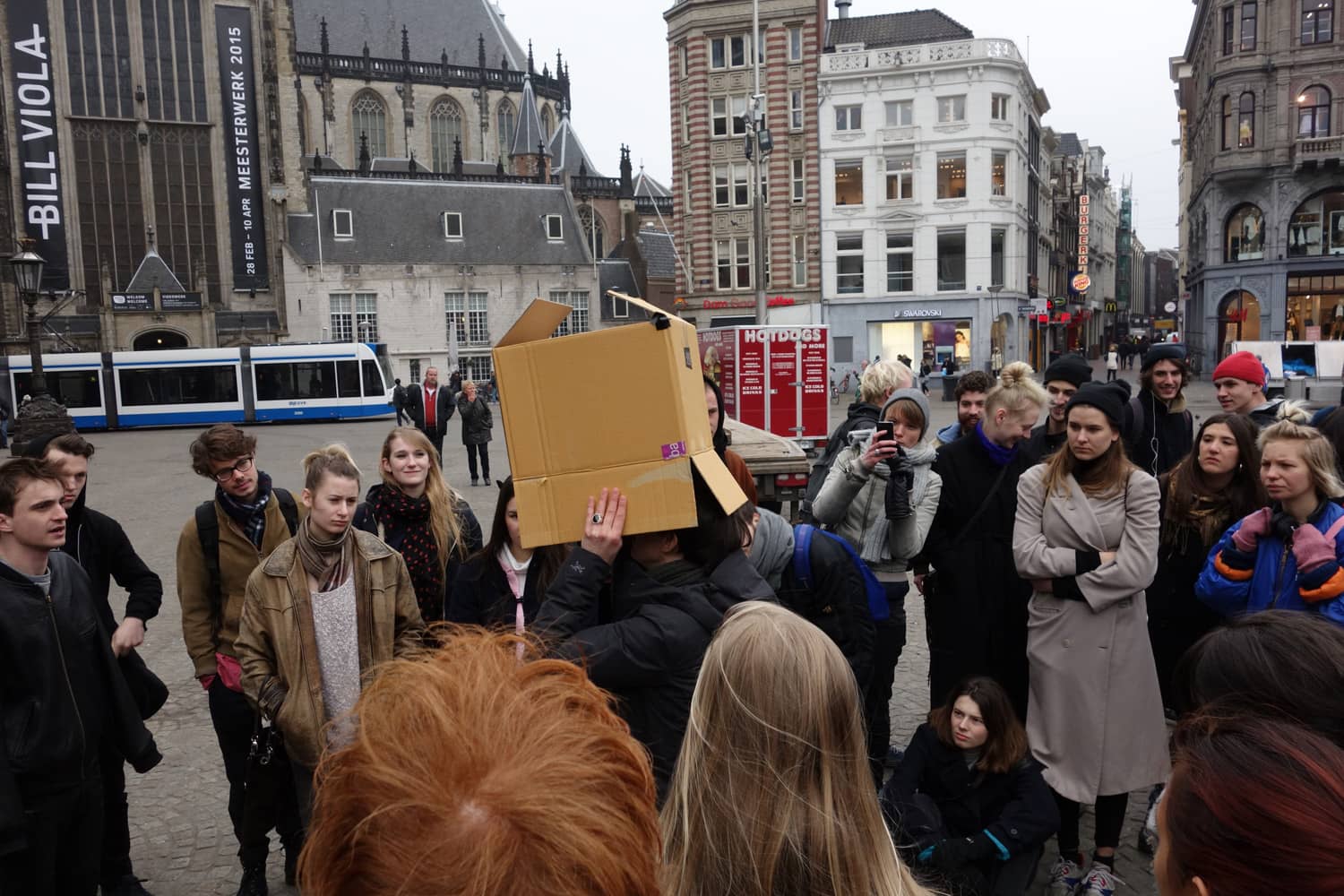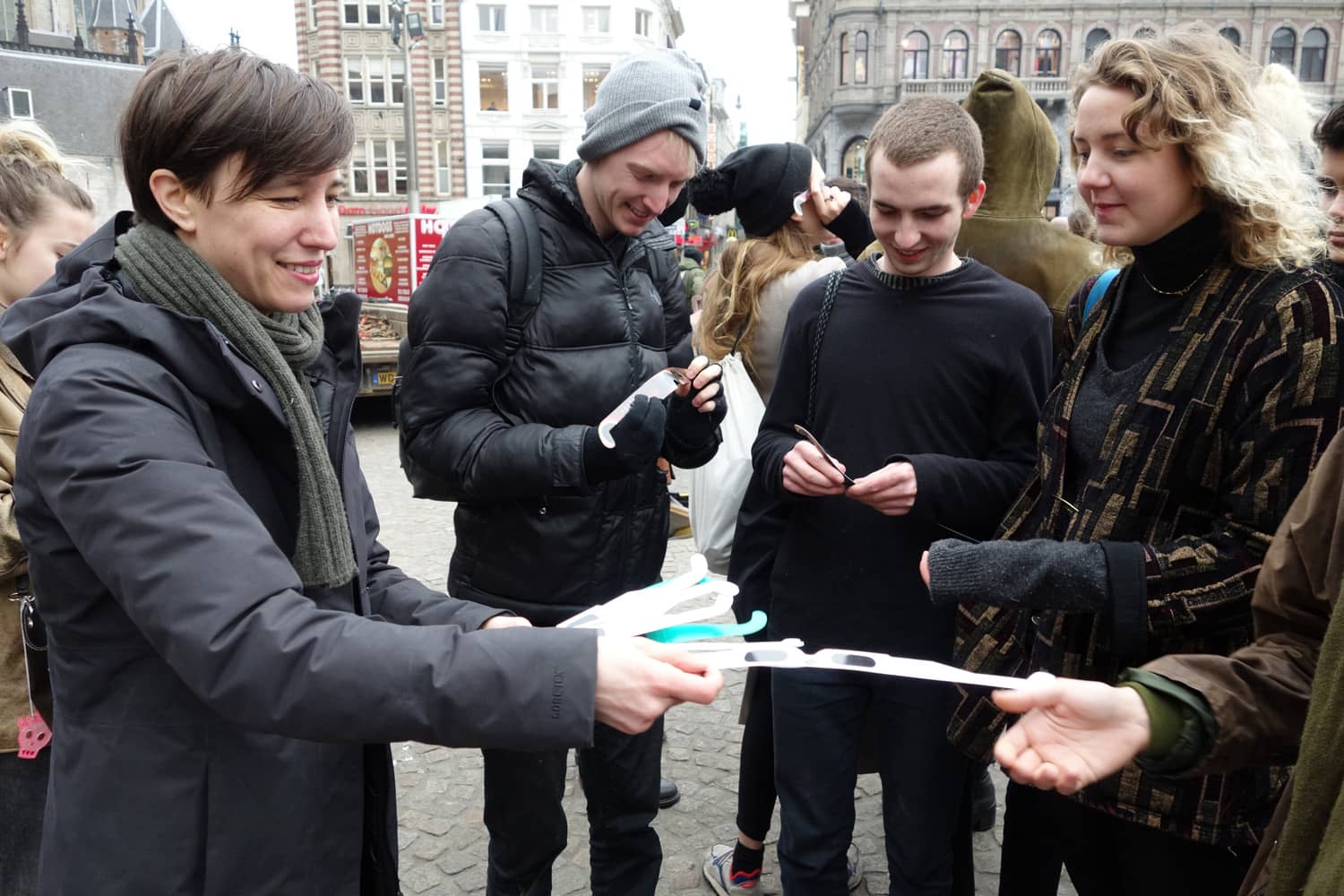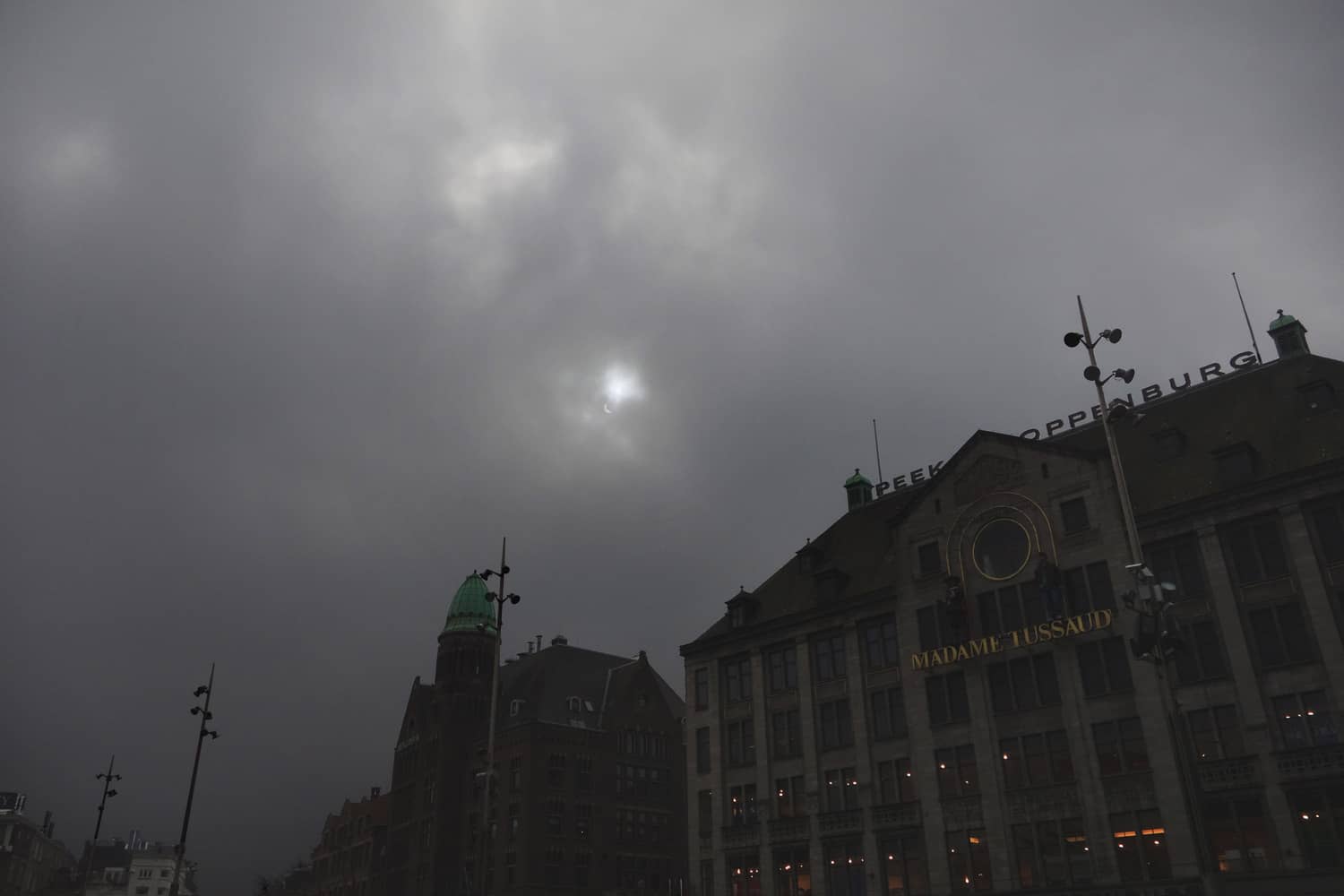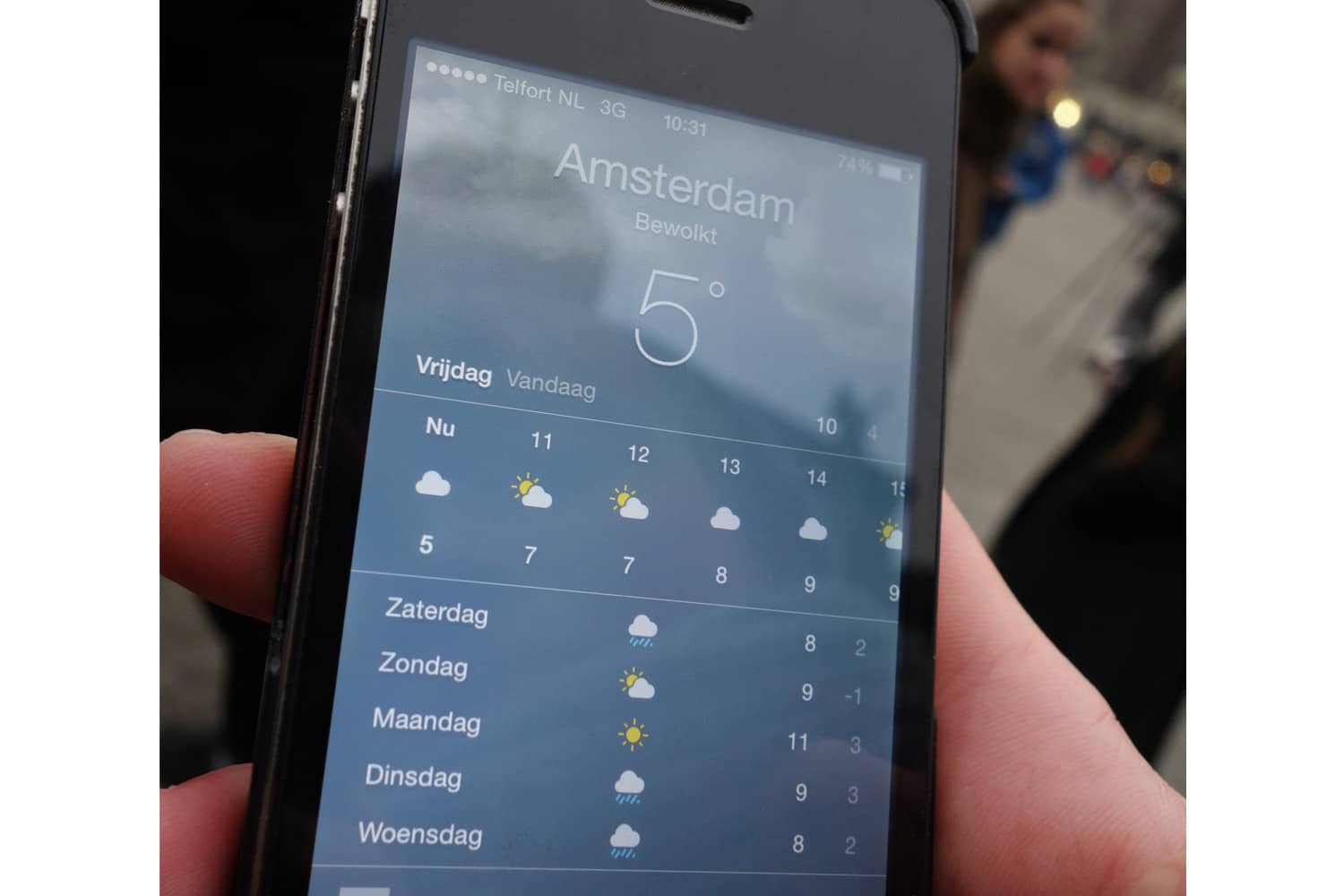Total Eclipse of the Equinox
Performance, 1 hrs, special viewing, Amsterdam, 2015
by Andrea Božić in collaboration with the Sun, the Moon, the Earth and Julia Willms.
20 March 2015 – Dam Square Amsterdam
Beginning: 9.30
Peak: 10.37
End: 11.48
Thank you for coming. I am happy to have the honour to present this very special performance by Andrea Božić in collaboration with the Sun, the Moon and the Earth. Andrea is at the moment at the Faroe Island finalising the preparations for this show. My name is Julia Willms and I am the host of the Amsterdam observation ceremony. Andrea asked me to read this letter to you:
Day for Night
Dear ladies and gentlemen / Dear friends, colleagues and passers by,
This is a special invitation to my new performance in collaboration with the eclipse of the Sun, the Spring Equinox and the Supermoon.
The performance is a once in a 500 000 years event – It is only that rarely that the three phenomena take place at the same time.
For today, the 20th of March 2015, the beginning of spring in the Northern Hemisphere and the beginning of autumn in the Southern Hemisphere, I have prepared a special spectacle titled Day for Night (Total Eclipse of Equinox Sun). The piece features a total eclipse of the Sun that will turn day into night at the moment of the Equinox: the same length of day and night in the entire world. The eclipse of the sun will interrupt this balance, the equal amount of light and darkness across the globe.
Day for Night is the fourth performance in the series of my collaborations with the night sky titled: Night Sky: Further Investigations Into Choreography, which is part of the larger cycle of collaborations with the weather titled Telling Future. For this dance, three celestial bodies will align in a straight line. The prelude of this performance started last night when the full Moon turned into a Supermoon: it came as close to the Earth as it possibly ever can and turned blood-red orange. This morning, the full blood-red Moon will move between the Earth and the Sun, temporarily disrupting the coming of the light.
The premium seats for the performance are at the North Pole. For the viewers at the North Pole, the Sun is rising at the horizon today for the first time after six months of darkness. Right now, as the Sun rises, the full Moon is moving in front of the Sun and will turn day into night again for a few minutes.
The performance will affect all our senses: the temperature falls, insects and birds stop making sounds, the tides get more extreme and the landscape changes dramatically in only a few moments. We are in the Moon’s shadow. We see the Moon’s dark side. It is only in these rare moments that we can see the Moon’s dark side. Dreams and secrets emerge in the dark.
Seats for the performance in the Moon’s shadow are unlimited but visibility depends on the area you are in. The premium seats with 100% visibility are available exclusively at the North Pole and the only other two populated areas of Svalbard, an island belonging to Norway and the Faroe Islands where I am now, the rest is covered by water. Interest in the performance has been so high that seats in Svalbard were all booked out already in 2008.
2nd and 3rd rank seats are available with up to 96% of visibility in North Africa, Europe, western Asia, the Pacific, East Asia, Iceland and Greenland.
Amsterdam will enjoy the spectacular 87% visibility.
At the moment I am in Klasvik, Faroe Islands, preparing the live broadcast for the viewers with less fortunate seating positions.
The performance will have its peak at 10.37 and this part will end at 11:48. The performance will reach its completion tonight, with a total balance of day and night in the entire world.
Day for Night is an immersive dramatic spectacle for three celestial bodies and an observer that deals with the questions of drama, control, authorship, personal responsibility and engagement in space-wide events.
Entrance is free.
In case you document the show, I would be very pleased to receive your materials: info@andreabozic.com
Warning:
Looking at the Sun directly is harmful to your eyes. Please do not look at the Sun directly without protection! If you do, you are risking to damage your eyesight.
Please follow the instructions given by Julia Willms for safe viewing.
Disclaimer:
The performance may provide a unique challenge for solar energy grid across Europe as reliance on solar energy production has grown. There’s little historical precedent for the impact that an eclipse could have on the solar energy grid as temperatures may drop 6 degrees celsius in 30 minutes. Two 1st critical moment is the beginning of the eclipse, when a reduction of 12 000 megawatt energy will occur. The most critical moment is the return of the sunshine after the eclipse causing a sudden feed of energy supply of 19 000 megawatt only in Germany. This is the amount of energy corresponding to the combined energy of 14 nuclear power plants.
This performance is a dry run for future scenarios as reliance on solar energy production grows.
The performance is viewed simultaneously from countless places in the areas of visibility. We have organized this special viewing in Amsterdam in partnership with ARE YOU ALIVE OR NOT? Looking at ART through the lens of THEATRE within the frame of the day curated by David Weber Krebs titled: On Enclosed Spaces and Great Outdoors. The performance is also presented within the program of the (Im)Possible Futures Festival in Ghent and within the framework of 2 Days of School About School at BUDA in Kortrijk.
Today’s Eclipse performance belongs to a series called Saros Series 120. The series began with a Partial Solar Eclipse visible from the Southern Hemisphere on May 27, 933 and will end with a Partial Solar Eclipse visible in the Northern Hemisphere on July 7, 2195.
T!he next performance in the series – a Total Solar Eclipse – will take place on March 30, 2033.
A few quotes from the press announcements:
‘When the lights, the Sun and the Moon are ‘eclipsed’, we are in the dark and events are hidden and shadowy. Secrets emerge and what’s unknown comes to light.’
‘Stunning and awe-inspiring.‘
‘Many cultures have perceived eclipses as change-inducing events. The eclipse of the sun is always a disruption of the normal order and a possibility of a new beginning.’
Take a moment to tune in and enjoy the reboot! Greetings from the North!
Andrea
